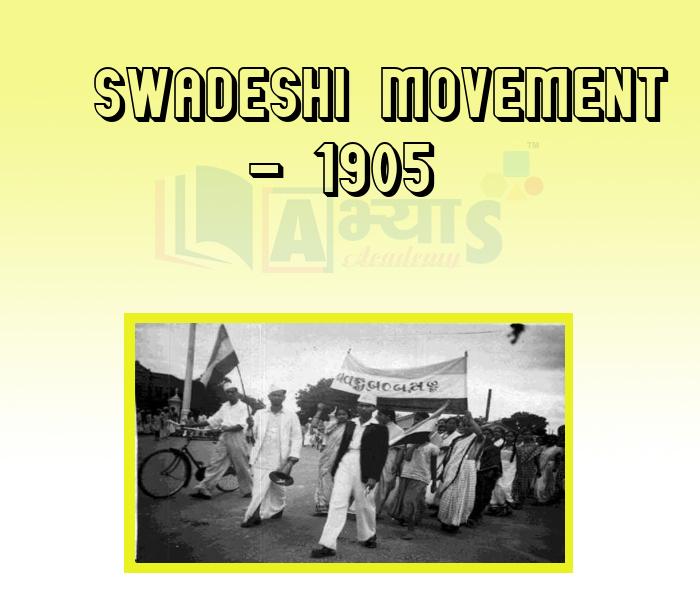Swadeshi Movement - 1905










Swadeshi Movement - 1905
Second phase of National Movement (1905-1919):
It began as a anti-partition agitation in Bengal and boycott was first suggested by Krishna Kumar Mitra in Sanjivni in 1905. The boycott of British products was followed by the advocacy of swadeshi and to buy indigenously produced goods as a patriotic duty.
1905-1909 - Movement confined to Bengal and launched as a protest movement
1909-1910 - Countrywide spread of movement and launching of anti colonial movement
1910-1911 - Swadeshi movement merged with revolutionary terrorist movement of 1t phase and led to foundation of numerous secret associations
Stages of Swadeshi Movement:
To encourage indigenous industries, some Swadeshi Enterprises were set up viz. kolkata potteries, Bengal Chemicals and Bengal Lakshmi Cutton Mills, Swadeshi melas or fairn were held for selling handicrafts. Charkha (spinning wheel) came to typify the popular name for country's economic self-sufficiency.
Which of the following are correct : (a) Balgangadhar Tilak , Arvind Ghosh and Vipin Chandra Pal , Lala Lajpat Rai, etc. were prominent leaders of the Congress called extremists. (b) According to Balgangadhar Tilak , "Our nation is like a tree whose root is Swaraj and its branches are Swadeshi and Boycott." | |||
| Right Option : C | |||
| View Explanation | |||
Second phase of National Movement, began as a anti-partition agitation in Bengal and boycott was first suggested by _____________________ in 1905 AD. | |||
| Right Option : A | |||
| View Explanation | |||
The seed of Swadeshi was sown by _____________________________ in Bengal before the beginning of the 'Swadeshi' Movement against the partition of Bengal. | |||
| Right Option : C | |||
| View Explanation | |||
Students / Parents Reviews [10]
Abhyas Methodology is very good. It is based on according to student and each child manages accordingly to its properly. Methodology has improved the abilities of students to shine them in future.

Manish Kumar
10thOne of the best institutes to develope a child interest in studies.Provides SST and English knowledge also unlike other institutes. Teachers are co operative and friendly online tests andPPT develope practical knowledge also.

Aman Kumar Shrivastava
10thIt has a great methodology. Students here can get analysis to their test quickly.We can learn easily through PPTs and the testing methods are good. We know that where we have to practice

Barkha Arora
10thMy experience with Abhyas is very good. I have learnt many things here like vedic maths and reasoning also. Teachers here first take our doubts and then there are assignments to verify our weak points.

Shivam Rana
7thIt was good as the experience because as we had come here we had been improved in a such envirnment created here.Extra is taught which is beneficial for future.

Eshan Arora
8thAbhyas is a complete education Institute. Here extreme care is taken by teacher with the help of regular exam. Extra classes also conducted by the institute, if the student is weak.

Om Umang
10thA marvelous experience with Abhyas. I am glad to share that my ward has achieved more than enough at the Ambala ABHYAS centre. Years have passed on and more and more he has gained. May the centre flourish and develop day by day by the grace of God.

Archit Segal
7thIt was a good experience with Abhyas Academy. I even faced problems in starting but slowly and steadily overcomed. Especially reasoning classes helped me a lot.

Cheshta
10thBeing a parent, I saw my daughter improvement in her studies by seeing a good result in all day to day compititive exam TMO, NSO, IEO etc and as well as studies. I have got a fruitful result from my daughter.

Prisha Gupta
8thI have spent a wonderful time in Abhyas academy. It has made my reasoning more apt, English more stronger and Maths an interesting subject for me. It has given me a habbit of self studying
